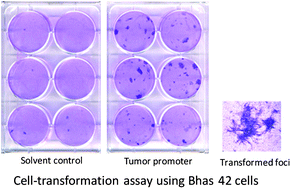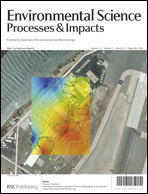Characteristics of the transformation frequency at the tumor promotion stage of airborne particulate and gaseous matter at ten sites in Japan
Abstract
We used a high-volume air sampler in the summer of 2007 and the winter of 2008 at ten Japanese sites (Sapporo, Sendai, Maebashi, Tsukuba, Shinjuku, Sagamihara, Shizuoka, Touhaku, Kitakyushu, and Kagoshima) to collect total suspended particulate (TSP) and gaseous matter for evaluation. We evaluated the transformation frequency at the tumor promotion stage of these samples in a cell transformation assay using Bhas 42 cells, which were established from BALB/c 3T3 cells transfected with the v-Ha-ras oncogene. All samples collected from the gaseous matter were negative for transformed foci. There were several patterns of transformation frequency at the tumor promotion stage by area for the TSP samples. At Sapporo, the transformation frequency at the tumor promotion stage was remarkably higher in winter than in summer as well as in winter at the other sites. At six urban cities from Sendai to Shizuoka, the levels of transformed frequencies per μg of suspended particulates in winter were almost the same, and were higher than those of the remaining three sites. At three sites, Touhaku, Kitakyushu and Kagoshima, the transformation results in winter were judged as negative. The characteristics of the transformed frequencies of the compounds adsorbed on particulate matter at the sampling sites were significant in winter. We also studied the correlation between the transformation frequency at the tumor promotion stage of the TSP samples and the results of quantitative analysis of 16 polyaromatic


 Please wait while we load your content...
Please wait while we load your content...